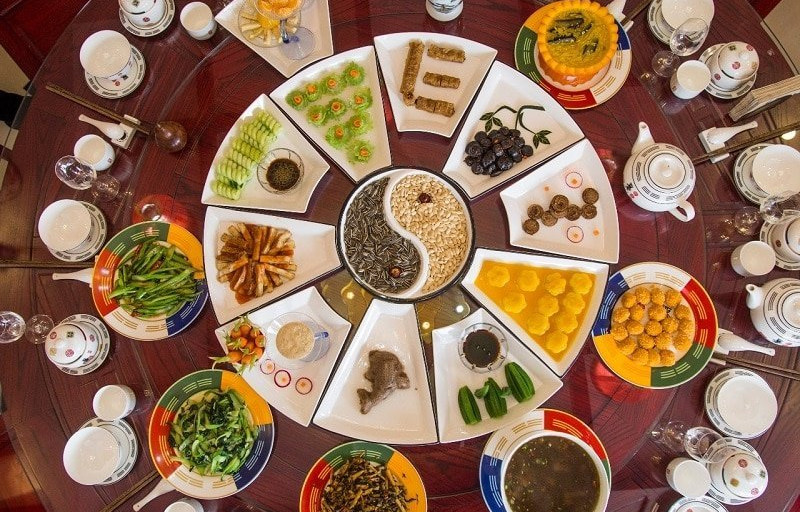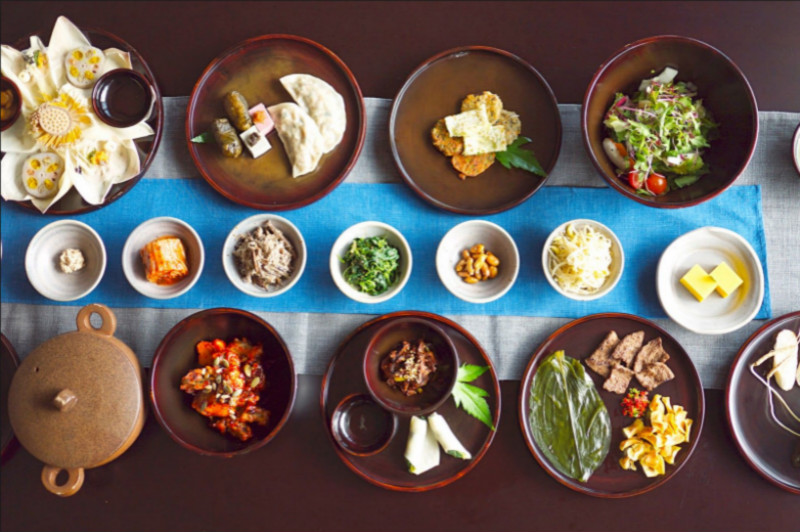
China’s Religious Food
Freedom of belief is a government policy, and normal religious activities are protected by the constitution. China is a multi-religious country, including Taoism, Buddhism, Islam, Protestantism, and Catholicism. The five major religions in China each have a long history of influence, with their unique customs and culture. Many contemporary dietary practices are shaped not only by culture, but by religious belief. Across the world, people make the choice to eat or avoid certain foods based on the laws of these beliefs. This post will introduce you China’s Religious Food.
1. Religious Food of Taoism

Many Taoist priests regard their diet as extremely important to their physical, mental and spiritual health in one way or another, especially where the amount of Qi in the food is concerned. The invention of the vegetarian food Tofu was credit to a Taoist. Taoist religious orders and literatures often encourage practitioners to be vegetarian to minimize harms, because all life forms are considered sentient.
The Taoist diet is based on eating locally-grown organic produce in season when possible and avoiding acidic foods, artificial food additives, heavily processed foods and those difficult to digest. The Taoism diet consists of 50 to 70 percent whole grains, 20 to 30 percent vegetables and 5 to 10 percent animal or bean products. Products that contain little or no nutritional value are avoided, such as refined white flour products and sugar.
2. Religious Food of Buddhism

Buddhist cuisine is a distinct sub-style of food that emerged within the Buddhist monasteries which traditionally prohibits any and all animal meats. Buddhists considers all life to be sacred, a belief that often translates into vegetarianism. They follow a no killing rule of any sentient being. In addition to this, alcohol and other intoxicants are forbidden because they may result in the violations of others.
Most of the dishes considered to be uniquely Buddhist are vegetarian, but not all Buddhist traditions require vegetarianism of lay followers or clergy. Tibetan Buddhism has long accepted that the practical difficulties in obtaining vegetables and grains within most of Tibet make it impossible to insist upon vegetarianism. In some Buddhist traditions, onions, scallions, garlic, chives and leeks are prohibited foods, as they are said to lead to anger and passion.
3. Religious Food of Islam

Because of the status of Islam as the second largest world religion, halal foods make up a surprising 16 percent of worldwide trade. Due to the large Muslim population in western China, many Chinese restaurants cater to, or are run by, Muslims. Traditionally, there is a distinction between northern and southern Chinese Islamic cuisine despite both using mutton and lamb.
Lanzhou’s Beef Lamian (hand pulled noodles), Xinjiang’s lamb kebab and Xi’an’s Yangroupaomo are just some of the representative Muslim dishes in China. They are forbidden to eat pork or drink alcohol.
See Islam in China and Muslin Tours.
4. Religious Food of Protestantism
Christians traditionally bless any food before eating it with a mealtime prayer (grace), as a sign of thanking God for the meal they have. Protestant Christians do not follow any specific, uniform dietary guidelines. The Bible, states Norman Geisler, stipulates one to “abstain from food sacrificed to idols, from blood, from meat of strangled animals”.
4. Religious Food of Catholicism

Catholics love food! For every feast day there is a special food or feast prepared. Fish have very deep roots in Catholicism, so I dub it “So Catholic You Must Put Out Into the Deep to Catch It”. Historically Catholics have abstained from meat on Fridays as an additional fast to show self-discipline.
Catholic monks first brewed beer and many still make their own today – and other kinds of alcohol!
Discover the Flavour of China
If you are a foodie who loves Chinese food, don’t miss the famous local cuisine at the destination you stay. Most often, delicious food is with beautiful scenery. We have designed a series of China food tours for you. If you have enough time, you can visit several places to taste the great regional cuisine. Beijing, Xian, Chengdu and Shanghai are the most famous ones. Also, if you are interested enough, you can also have chances to make Chinese food.
Keep Reading
- China’s Regional Food
- Chinese Desserts
- Chinese Dining Etiquette and Culture
- Chinese Food Ingredients
- Chinese Food Menu
- Chinese Food Recipes
- Chinese Medicinal Cuisine
- Chinese Seasonings
- Chinese Snacks
- Chinese Tea Food
- Chinese Vegetarian Food
- Cooking Class in China
- Food Streets in China
- Restaurants in China











